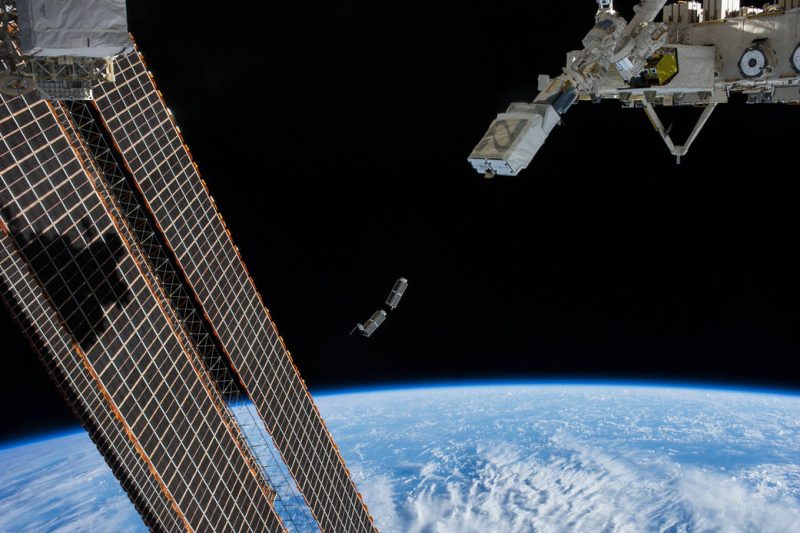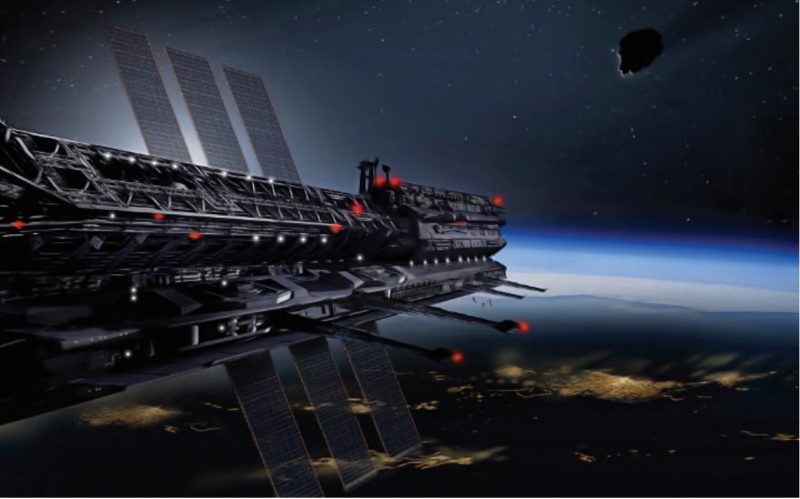
By Megan Ray Nichols, Schooled By Science
Within just a few months, Asgardia – named for the city in the sky of Norse mythology, whose stated goal is to become the first space nation – will have its first satellite catapulted into orbit by NASA. Aboard will be personal data of Asgardia “citizens.” The Asgardia-1 satellite is due to launch aboard a NASA mission to the International Space Station later this summer. This week (June 26, 2017) Asgardia said that NASA-mandated tests have now been successfully conducted with its satellite. Its satellite’s batteries and power systems were tested, and the satellite passed both a vibration test, simulating vibration during launch, and a vacuum chamber test, designed to ensure that the satellite will survive in the vacuum of space.
All these are vital steps toward an eventual future home in space for approximately 1.5 million people, if the dream of Russian engineer and businessman Igor Ashurbeyli comes true. He’s not the only one who believes in Asgardia’s mission. Its website allows people from all over the world to apply for dual citizenship between the proposed space nation and Earth.
As of this week, more than a quarter million people have requested to join.

Asgardians have been busy uploading personal data to the website, so that it can go aboard Asgardia-1. They’ve also been penning a constitution and are now ratifying it, as well as forming the space nation’s first government and ministries, such as Finance, Science, Foreign Affairs, Justice, Trade and Commerce. Asgardians say they will eventually have their own currency, parliament and laws – just like any society.
The proposed space nation hopes to become a member of Earth’s United Nations.
The stated mission of the space nation is to protect the Earth from space debris and meteorites; that is, Asgardia hopes to develop and maintain an asteroid shield.

It also wants to unify a group of people with peace and give open data access to all countries.
Currently, only a handful of countries has the technology to launch spacecraft successfully. Asgardia says it will pursue its goals with cooperation from the United States, Russia, Canada and Romania.
The satellite launching in September 2017 is small, known as Asgardia-1 CubeSat. It is no larger than 8 inches (20 cm) on each side and contains data from the first Asgardians. The data will remain in space and transmit to other Asgardia satellites and spacecraft, say Asgardia’s founders.
The launch of Asgardia-1 coincides with the 60th anniversary of the first orbital satellite, Russian Sputnik-1. Asgardia-1 will remain in orbit for about five years and then pull into the Earth’s atmosphere and burn up.
How Asgardia May Come to Be
Igor Ashurbeyli provided funding from his company, Aerospace International Research Center, to help get the project started. The nonprofit and nongovernmental organization is not disclosing its funding at the moment, but the cost to build and launch the ISS was $100 billion.
Asgardia will need to be much larger than the International Space Station in order to house so many people permanently in space. Even the SpaceX missions run up to $65 million for a round trip. The project is relying on crowdsourcing for the design, selection and funding of Asgardia’s flag and insignia as well as its national anthem.
The sheer size of the spacecraft that will need to operate in space permanently is challenging. While 3D printing is a popular choice for some modern manufacturing endeavors, not all materials are being replaced for their plastic counterparts. In a recent study, nearly 60 percent were unlikely or very unlikely to turn to 3D printing for fasteners. When it comes to project as immense as Asgardia, the materials used to construct the craft will need to be strong enough to withstand the pressures of leaving Earth’s atmospheres, and the harsh conditions of space.
The founders are hoping that talented and high-quality researchers, engineers, technicians and other professionals will request to join Asgardia on the project and possibly live on the spacecraft.
Hashing Out Fine Details of Asgardian Life
All great scientific innovations face challenges, and Asgardia is no exception. The project focuses on unity in an unrestricted nation; however, current space laws might limit how much of Asgardia’s dream can be realized. Will Asgardia ultimately change the space laws, including those from The Outer Space Treaty (OST)? Some Asgardians believe the nation will be outside of the current OST laws while others think these laws will depend on the country in which Asgardia launches from in the near future.
Determining which laws the space nation must follow is crucial for it becoming a successful society.
The founders and other members are sorting and approving applications for citizenship. Currently the majority of Asgardians are men with only 17 percent of the citizens consisting of women.
Nonetheless, Ram Jakhu, director of the Institute for Air and Space Law at McGill University and an Asgardia founding member, states that Asgardia will be:
…a cross-ethnic, cross-national, cross-religious, ethical, peaceful entity trying to settle humanity in space.
It’s only a matter of time before we see who will sign up for this endeavor and who will be in charge of the new government.
One can only hope women will have equal representation in government and leadership positions in Asgardia.
One of the largest challenges is the affect space can have on the human body. One particular study on twin astronauts found that the participant’s telomeres in his chromosomes lengthened while in space. His twin brother, who remained on Earth, did not experience any changes. Researchers documented other changes, but all levels normalized after returning to Earth.
The founders are continuing to iron out the details of Asgardia, but the small satellite launch will bring the new nation into space this year, and with it, the hopes of a larger craft to follow.

Bottom line: Asgardia’s 1st satellite – Asgardia-1 – is scheduled to launch aboard a NASA mission to the International Space Station in the summer of 2017.











